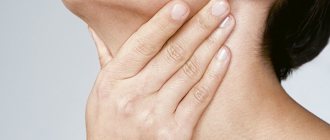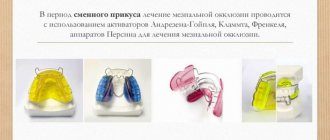Symptoms and treatment of lip jams in adults and children
The popular name for angulite is zaeda.
The disease is characterized by the presence of cracks in the corners of the mouth, erosion and irritation. In some cases, slight bleeding may occur. Common causes of sticking at the corners of the mouth include infection, irritation, and damage to the skin at the corners of the lips. Angulitis is rare in children. Most often, the disease is diagnosed in adults. Predisposing factors:
- decreased general immunity;
- deficiency of B vitamins;
- the presence of a bacterial infection;
- habit of licking lips, malocclusion;
- hypothermia;
- long-term use of corticosteroid drugs;
- eating unwashed vegetables and fruits;
- presence of caries;
- chronic diseases (diabetes mellitus, anemia, HIV, liver disease).
Your pediatrician will tell you at your appointment what causes seizures in babies.
The child has seizures
Seizures or angular cheilitis, angular stomatitis (cheilosis, angulitis) are unpleasant, painful, and ugly! Cheilitis is a violation of the integrity of the skin or mucous membrane of the lips due to inflammatory changes caused by opportunistic microorganisms. Almost every wound in the area of the outer and inner surfaces of the lips, as well as the corner of the mouth, can be called a jam. The exception is traumatic injuries to the skin and mucous membranes, which are quite common in children.
The most common cause of seizures in a child, according to pediatricians, is a deficiency of B vitamins (B-2 - riboflavin, B-6 - pyridoxine), so necessary for healthy skin and normal growth of hair and nails, as well as microelements - iron and zinc . However, seizures often occur due to decreased immunity and certain diseases. Many children suffering from this problem have a history of diseases such as chronic tonsillitis, caries, frequent colds and viral infections, and anemia. Among the reasons for a child's seizures may be a staphylococcal or streptococcal infection, fungal diseases, helminthic infestations, the habit of constantly licking his lips, non-compliance with the rules of personal hygiene, especially oral hygiene, malocclusion, prolonged sucking of nipples and pacifiers. The main causes of angular cheilitis in children are microbial factors, allergic reactions, various diseases and pathological abnormalities in the body.
When a child’s body is healthy, ordinary microorganisms that normally live on the surface of the skin do not cause any symptoms. As soon as the body's defenses decrease, they immediately begin to actively multiply, causing inflammation of the skin with the formation of wounds, cracks on the lips or in the corners of the mouth. Streptococcal and fungal infections are the main pathogens that provoke the formation of jams. These two classes of microbes live on the surface of the skin and can cause inflammatory damage to the surface layers of the skin in children, which ends in the formation of a small ulcerative surface, which is called a jam. It is important for parents to know that for seizures to occur, there must be a decrease in the body’s immune function, against the background of which opportunistic microflora (fungi and steptococci) are activated. Sometimes this condition occurs as a result of infection with these microbes from the environment.
The following can lead to decreased immunity in children : colds; overheating or hypothermia of the body; allergic reactions; germ-infected foods, toys, objects around the child that he puts into his mouth; hypovitaminosis; diseases of the immune system; diseases of the blood system; diabetes; HIV infection.
Cheilitis is not a common occurrence, but when it occurs, it usually lasts for a long time. It is more common in children 6-8 years old and 13-17 years old and appears in the spring, when there are not enough vitamins, and immunity is reduced after the cold season and previous diseases. Parents sometimes confuse jaundice with herpes, which can also appear on the lips. However, a herpetic infection can affect any place in the nasolabial triangle, and seizures appear strictly in the corners of the lips.
The first symptoms of cheilitis in a child are the appearance of small bubbles in the corners of the mouth, which burst over time, and erosion forms in their place. The skin of the corners of the lips becomes wet and bleeds, microcracks appear. The erosions either heal or become inflamed again. Children may experience pain that makes it difficult for them to eat or talk.
Treatment should be comprehensive: if necessary, laboratory diagnostics are carried out to identify the pathogen; They do a general blood test, stool culture for enterobiasis and dysbacteriosis, and examine the thyroid gland. In addition to antibacterial ointments and antiseptic lotions, multivitamins and immunostimulants are prescribed, if necessary, dysbacteriosis is treated. Children's nutrition is being adjusted: consumption of dairy products, vegetables and fruits is increased.
Sometimes it happens that seizures do not respond to local treatment for a long time. This is possible even despite the use of different combinations of agents, the action of which is aimed at different causes and mechanisms of development of this problem. This situation indicates a serious weakening of the body’s immune and protective resources. Parents need to take this fact into account. After all, children with such problems are subject to thorough examination: examination by a pediatrician; consultations with a dermatologist and dentist; conducting a general blood and urine test; biochemical blood test; carrying out culture of the jam for microflora and its sensitivity to the action of specific drugs. All this will help to establish the true cause of the formation of ulcers in the child and their resistance to local treatment. If cheilitis cannot be treated and does not heal for a long time, this can be associated with serious health problems that need to be identified. This will not only get rid of unpleasant wounds in the corners of the mouth, but also prevent the disease that contributes to their appearance.
For wounds that are resistant to treatment, the following may be prescribed in combination with local medications: antibiotics (azithromycin, flemoxin, augmentin in small dosages); antifungal agents (fucis, fluconazole, nystatin); means to strengthen the immune system; vitamin preparations (vitamins A, E, C, B, multi-tabs, kinder biovital). You should not self-medicate - this can lead to complications; you should promptly contact a specialist for consultation and treatment.
We know that it is easier to prevent any problem than to treat it, therefore, in order to prevent angular cheilitis, remember, it is very important that the child’s nutrition is correct. The diet of children and adolescents should be complete, balanced, the nutrition itself should be regular with a certain meal regimen depending on the physiological needs of the body and age. Do not forget about such helpers as vitamins and microelements, this is our main defender - ascorbic acid, as well as B vitamins, vitamins A and E, preparations containing zinc, selenium, iron, magnesium, potassium, iodine. For good nutrition, use foods rich in vitamins and microelements in your children's diet: milk and dairy products, red meat, eggs, offal (heart, liver), porcini mushrooms, buckwheat and oatmeal, whole grains, seafood, green beans, spinach, cabbage , greens, fruits and berries, nuts. Remove everything spicy, salty, and sour from your diet. If this is not enough and there is a need, after consulting a pediatrician, you can take a vitamin complex. Also, do not forget about the rules of personal hygiene, try to stop your child from licking his lips, teach facial and oral hygiene techniques, and do not use other people’s personal hygiene items.
And most importantly, lead a healthy lifestyle, walk more with your baby in the fresh air, sunbathing and hardening strengthen the immune system, the example of parents is also important, for children you are always an authority and an object to follow!
Head of the dental department of the healthcare institution "15th city children's clinic" Alla Ivanovna Skorobogataya
Types of angulite
Considering the etiology, seizures can be primary and secondary. In turn, the primary ones are divided into: streptococcal, viral and candidiasis.
Viral seizures. They are caused by a viral infection (herpes virus). In this case, a doctor will help you choose an ointment for sticking in the corners of an adult’s lips.
Streptococcal seizures are caused by streptococcal infection. A characteristic manifestation is the formation of a yellowish-red crust.
Candidiasis angulitis. The cause is a fungal infection. This type is characterized by a chronic course and the absence of a crust.
Why do children develop lumps in the corners of their mouths?
Angular stomatitis in children comes from different origins. Let's look at the most common reasons for its development.
Atopic dermatitis and its subtypes
Most often, inflammation in the corners of the lips appears against the background of atopic dermatitis. This is a disease in which the skin becomes very sensitive and prone to dryness and exacerbations in the form of inflammation. The disease is associated with a violation of one of the genes responsible for the protective functions of the skin.
With atopic dermatitis, seizures may appear due to an exacerbation of the disease or due to contact with an irritating substance from the external environment. It could be a child's saliva or toothpaste. In this case, the cause of the seizure is contact atopic dermatitis. This means that if you remove the irritating object, these troubles will soon disappear.
There is also allergic dermatitis, in which a child develops angular cheilitis after eating a product containing an allergen. Often these are citrus fruits.
If you cannot find such a trigger, you can assume that your child has atopic dermatitis of endogenous origin. Exacerbations occur regardless of external factors. Only a pediatrician or dermatologist can confirm this. But you may suspect the disease in a child if someone in the family has atopic dermatitis, bronchial asthma or allergies.
Bacterial damage
Angular cheilitis can develop as a bacterial or fungal inflammation. This type of seizure is characterized by bilateral damage with the formation of cracks, crusts and blisters.
Such jams occur due to increased hydration of the mucous membrane and the addition of bacteria or fungi. For example, a child constantly licks his lips or does not swallow saliva, and it flows out. These factors create a moist environment at the corners of the mouth, and any decrease in immune system function will allow bacteria or fungi to thrive there. Fortunately, this is rare in children and is more common in older people.
Angulitis during pregnancy: how to get rid of it
Pregnant women are very vulnerable to various infections. Risk factors in this case are vitamin deficiency and increased stress on the body.
Causes of angulitis during pregnancy:
- licking lips in the cold;
- allergic reactions;
- caries;
- dry lips;
- general decrease in immunity.
On our website Dobrobut.com you will find more information on this issue. Here you can make an appointment with a doctor, who will tell you how to get rid of the jam and which ointment is best to use in your case.
Angulitis: clinical manifestations
The symptoms of angulitis are very similar to the manifestations of herpes, so it is extremely important to promptly contact a specialist who will make the correct diagnosis and tell you how to quickly cure angulitis.
Symptoms of seizure:
- redness in the corners of the mouth;
- cracks;
- multiple blisters with purulent contents;
- slight bleeding (not always);
- purulent crusts.
Treatment of lip jams in adults depends on the etiology and form (acute or chronic). It is very important to start treatment on time, because without it, the affected area can increase, causing significant discomfort to the patient.
Streptoderma in children
Streptococcal impetigo in children
The favorite localization of inflammation in children is the skin of the face, hands and other open areas of the skin.
The disease begins with the appearance on a hyperemic background or externally unchanged skin of the primary morphological element of streptoderma - phlyctena with a diameter of 1 to 2-3 mm, surrounded by an inflammatory rim. At first, phlyctena is a tense vesicle, which soon becomes flabby, and its contents turn from light serous to cloudy or purulent. Subsequently, the conflicts dry out into honey-yellow crusts, after peeling off which a pink spot remains. Individual conflicts can be isolated from each other by areas of healthy skin or increase in size due to growth along the periphery and merge. The development of the elements is accompanied by severe itching, which is why children scratch the skin, spreading the infection to healthy areas where new conflicts form. The duration of streptoderma in children is 3-4 weeks.
Slit-like impetigo in children
This form of streptoderma in children is also called seizure or angular stomatitis. Phlyctens are usually localized in the corners of the mouth, less often - at the wings of the nose or in the corners of the eyes. In place of the opened blisters, shallow cracks, covered with yellowish crusts, form.
This type of streptoderma in children occurs with itching in the mouth, drooling, burning, and pain when eating. The protracted course of slit-like impetigo is promoted by caries, rhinitis, conjunctivitis, and the habit of licking lips. The infection is easily transmitted through kissing and sharing utensils, so familial cases of the disease are common.
Lichen simplex in children
This form of streptoderma in children belongs to the dry variety of streptococcal impetigo, i.e. it occurs without the formation of conflicts. The infection affects the face (perioral area, cheeks, chin), and less commonly, the skin of the trunk and limbs.
In this case, in the lesions, delimited lesions of a round or oval shape, white-pink in color, covered with small dry scales are formed. After exposure to the sun, the elements decrease or disappear completely, but the affected areas of the skin are less pigmented, which is why the skin takes on a mottled appearance.
Dry streptoderma in children usually occurs in the fall or spring, often in the form of epidemic outbreaks in children's groups.
Streptococcal diaper rash in children
With intertriginous streptoderma in children, inflammatory elements are located in the folds of the abdomen, inguinal-femoral, intergluteal, axillary region, and behind the ears. Primary elements - conflicts - merge into wet, eroded surfaces. The lesions have a bright pink color, scalloped borders and a rim along the periphery. Around the main focus there are screenings in the form of individual elements at different stages of evolution (vesicles, pustules, crusts).
Painful cracks and erosions often form in the skin folds, dramatically affecting the child’s well-being. This clinical variant of streptoderma in children is prone to chronicity and is often aggravated by the addition of a secondary fungal infection.
Vulgar ecthyma in children
Vulgar ecthyma in children refers to deep streptoderma of the skin. In most cases, it develops in weakened and often ill children, with poor hygienic skin care, and itchy dermatoses. Elements of streptoderma are localized on the legs, thighs, buttocks, lower back, and less commonly, the upper limbs and torso.
Initially, a phlyctena or pustule with serous-bloody or serous-purulent contents forms at the site of infection, which quickly dries into a soft yellowish-brown crust. When the crust is removed, a deep, painful ulcer is exposed, the bottom of which is covered with a dirty gray coating. After 2–4 weeks, a pigmented scar forms at the site of the ulcer.
Severe forms of ulcerative streptoderma in children include perforating and necrotic (gangrenous) ecthyma: in these cases, ulcers can penetrate deep into the dermis and subcutaneous fat.
The forms of streptoderma discussed above in children are often accompanied by a disturbance in the general condition, fever, and regional lymphadenitis.
Diagnosis of the disease
Unfortunately, patients with angulitis very rarely turn to a specialist for help, but in vain. After all, the acute form of the disease is easier to cure, thereby preventing the disease from becoming chronic.
Required research:
- general blood and urine tests;
- blood sugar test;
- biochemical analysis and liver tests;
- ELISA blood test for herpes viruses;
- blood test for syphilis;
- Ultrasound of the abdominal cavity.
Consultation with highly specialized specialists may also be required.
Treatment of lip jams in adults
After examining the patient and studying the test results, the doctor will prescribe a course of treatment, usually consisting of medications (local or general action) and vitamin-mineral complexes. It is extremely important to give up bad habits and avoid irritating factors during treatment.
If there is an infection, the patient will be prescribed a course of antibiotic therapy (taking into account the type of pathogen). For a viral infection, antiviral drugs are recommended, and for candidiasis angulitis, antimycotic drugs, such as nystatin and lamicon. Trimistin and tetracycline are prescribed for mixed forms of the disease. All this applies to the treatment of the disease in adults. Your pediatrician will tell you how to treat jams in the corners of the mouth in children. After examining the baby, the pediatrician will prescribe drug therapy and suggest the most effective traditional medicine.
Symptoms
The main signs of the disease are:
- swelling, cracks;
- races forming in the corners of the mouth;
- peeling and dryness, a burning sensation;
- yellow or gray crusts;
- soreness, development of blisters from which pus can be released.
Diagnosis and treatment
The disease has a code of 10–K13.0, which determines the probable causes and symptoms. When the first signs appear, you should contact your dentist and pediatrician, which will help to identify problems in a timely manner, conduct a diagnosis and begin treatment. Early treatment allows therapy to be effective and to avoid worsening.
Treatment of angular cheilitis in children requires complex measures. Depending on the severity of the condition, antibacterial ointments or gels, immunostimulating agents, and multivitamin complexes are prescribed. The diet is adjusted to include more dairy products, fruits and vegetables. If persistent wound formation is observed, antibiotics are required. If there is no improvement, an additional appointment with specialized specialists, for example, a gastroenterologist, dermatologist and others, is recommended. For candidiasis, antifungal drugs are prescribed.
The treatment regimen usually includes:
- topical agents, gels or oil compresses on the affected area;
- anti-inflammatory drugs;
- ointments based on hormonal agents;
- sanitation of the child’s oral cavity;
- antibiotics;
- vitamin complexes;
- eliminating the causes of the disease;
- exclusion of factors that have a negative effect on tissue.
Prevention
The process of inflammation can be prevented by removing or minimizing negative external factors. It is necessary to teach the child to stop licking the corners of the mouth and lips, and to use hygienic lipsticks or gels when dry. For dry skin, it is permissible to use creams intended for children and adolescents.
As a preventive measure, you need to adjust your diet. It is recommended to exclude from the diet sour and spicy foods, too salty dishes that irritate the mucous membrane. It is necessary to increase the amount of non-acidic fruits and vegetables, foods with a high content of riboflavin and iron.
About Us
My Ort Dental Clinic offers services for the treatment of diseases in children. We provide the following benefits:
- offices equipped with modern technical equipment;
- comfortable conditions for Patients of any age;
- qualified children's specialists;
- comprehensive services, including diagnosis, treatment and monitoring of achieved results;
- favorable price.
You can visit us at the address: St. Petersburg, st. Yesenina, 1, building 1. We work seven days a week, you can make an appointment using a convenient form on the website or by phone.











